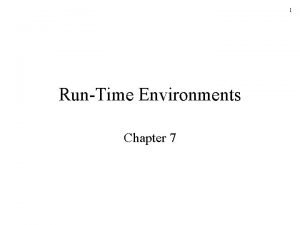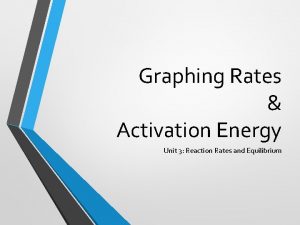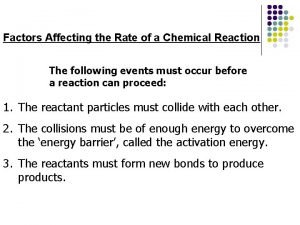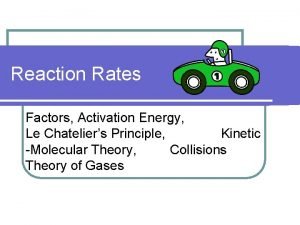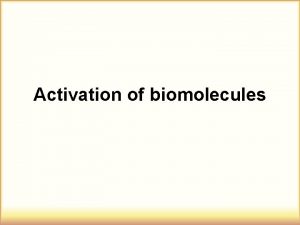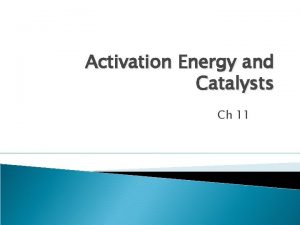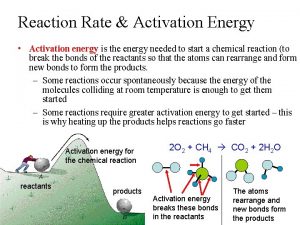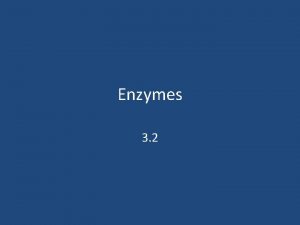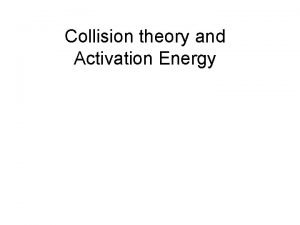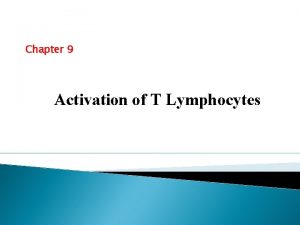Chapter 16 2 Activation Energy The activation energy


![Arrhenius equation Consider a rate equation, rate = k[A][B] As the temperature increases, the Arrhenius equation Consider a rate equation, rate = k[A][B] As the temperature increases, the](https://slidetodoc.com/presentation_image_h2/4017837d1f2313562ccbfce84bda665c/image-3.jpg)




- Slides: 7

Chapter 16. 2: Activation Energy The activation energy of a reaction can be determined from the effect of temperature on reaction rate.

Important terms for this section Arrhenius equation Frequency Orientation Constant
![Arrhenius equation Consider a rate equation rate kAB As the temperature increases the Arrhenius equation Consider a rate equation, rate = k[A][B] As the temperature increases, the](https://slidetodoc.com/presentation_image_h2/4017837d1f2313562ccbfce84bda665c/image-3.jpg)
Arrhenius equation Consider a rate equation, rate = k[A][B] As the temperature increases, the rate constant increases exponentially The Arrhenius equation is used to model how the rate constant changes with temperature k = Ae-Ea/RT

Arrhenius equation This is the fraction of collisions that have enough E to overcome EA A contains a factor to address that not all collisions will be in the right orientation Called the frequency factor or pre-exponential factor Takes into account frequency of collisions AND the orientation of collisions Can be considered constant

How to find EA using Arrhenius equation 1. Conduct a series of experiments at a range of temperatures 2. Calculate a rate constant, k, for each temperature 3. Plot a graph of ln k (y-axis) against 1/T (X-axis) 1. T is the absolute temperature (Kelvin) 2. This graph should be a straight line 3. The gradient on the graph is –EA/R, where R is the gas constant 4. The intercept of the graph on the ln k axis (y-axis) is ln A


How to find EA using Arrhenius equation 1. In general, if all other things are equal 2. The higher the EA, the slower it goes 1. If 1/(e. Ea/RT) 2. Then if EA is larger 3. Then e is larger 4. AND 1/e is smaller so k is smaller 3. The value of A will be smaller for more complex molecules 1. More specific collisions have to occur 4. A catalyst makes EA smaller and thus, k bigger
